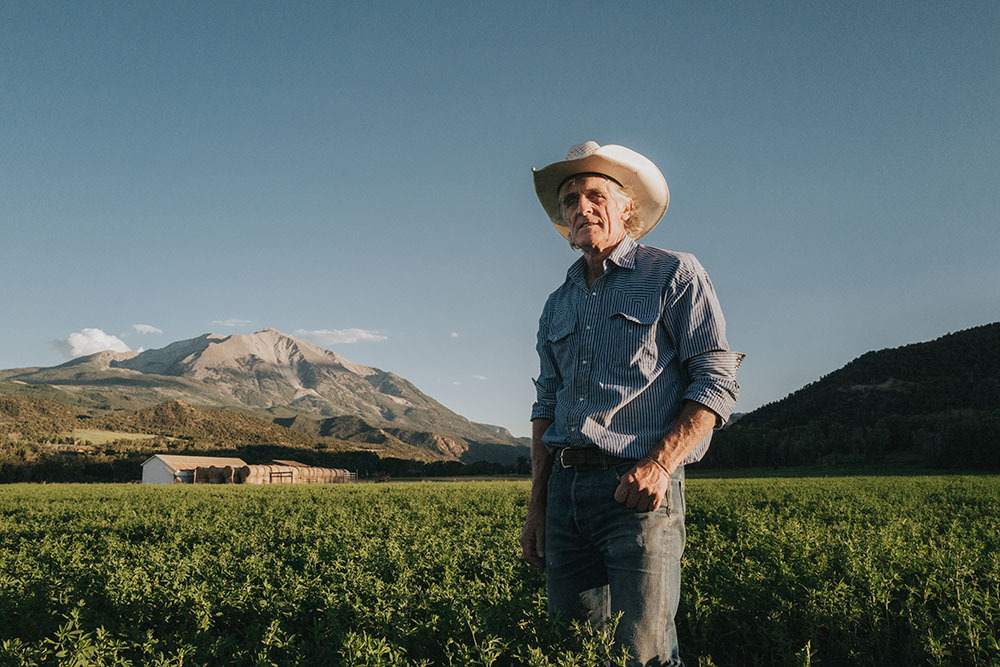Is Use It Or Lose It An Absolute? Historical consumptive use and understanding your water rights
What does “use it or lose it” really mean in the context of western water? Should water rights holders divert their entire decree? How does historical consumptive use factor into water right abandonment? Greg Peterson, executive director of the Colorado Ag Water Alliance and Bill Fales of Cold Mountain Ranch joined WLA on Friday, February 2nd to discuss these water rights topics and share their experiences. The webinar, “Is Use It Or Lose It An Absolute? Historical consumptive use and understanding your water rights” was the third installment in WLA’s Winter Water Webinars series.
For those interested in learning more about water and water law in Colorado, Peterson suggested the following books and resources:
- Colorado Water Law for Non-Lawyers, P. Andrew Jones and Tom Cech
- The Man Who Thought He Owned Water, Tershia D’Elgin
- University of Denver, Sturm College of Law, Water Law Review
- Water Education Colorado Citizen’s Guides
Common misconceptions
The webinar began with Greg Peterson’s presentation on misconceptions surrounding the “use it or lose it” principle, historical consumptive use, and water conservation and efficiency practices.
Two common “use it or lose it” misconceptions, as Peterson explained, are: maximizing the amount of water you divert protects your water right, and reducing the amount of diversion for conservation or efficiency could mean losing some portion of the water right. The truth is, maximizing your diversion cannot protect your water right, and reducing your diversion will most likely not lead to your water right being lost… but it could impact you in some circumstances.
In irrigated agriculture, the true measure of your water right is the historical, beneficial consumptive use. In the case of an irrigation right, this is the documented annual crop evapotranspiration. This analysis, used in water court and conservation programs like the system conservation pilot program, takes many factors into account. These include: water court decrees, water right proof of ownership, diversion records, irrigated acreage through time, representative climate data, soil information, irrigation methods, and crop type. But what about diversion? Consumptive use only takes into account what was consumed when the water was available. The diversion records tell us if there was even water for the crop to consume.
Fear of abandonment
So, how do you actually “lose it”? A water right may be deemed abandoned if it goes unused for ten years or more in Colorado, but only when there is a clear intent to abandon. To avoid abandonment, the common misconception is that diverting the entire decreed amount is necessary. However, this may not be the best approach, as excessive diversion won’t necessarily affect your beneficial use and may be deemed wasteful and could have legal implications. The most effective and secure method to demonstrate water diversion is by using a measuring device. If circumstances prevent the exercise of water rights, presenting correspondence or records is crucial for explaining the situation to the state to prevent abandonment.
When it comes to making irrigation and conservation decisions on the farm or ranch, these could have water rights implications too. Changing crop types and using more or less water, irrigating fewer acres, increasing the efficiency of an irrigation system – all of these practices would most likely impact consumptive use, and how much water can be diverted. In Colorado, a long-term record of reduced diversions can be considered the permanent character of the water right, which could lead to partial abandonment. For example, if you increase water efficiency and subsequently increase consumptive use, a portion of your water right diversion could be ratcheted down.
Conservation programs and your water rights
How do conservation programs work in relation to water rights? While efficiency measures and conservation practices can all change the permanent character of the water right, Colorado has a number of protections for landowners interested in enrolling in state or federal water conservation programs. Senate Bill 13-19 protects an owner enrolled in a state or federal conservation program for users in water divisions four, five, and six by protecting diversion records from being factored into historical consumptive use analysis, for example. There are also administrative tools like fallowing and leasing pilot projects, temporary instream flow loans, rotational crop management contracts, substitute water supply plans, and interruptible water supply agreements. A water user must be enrolled in an approved state or federal program to be eligible for protections, however.
The Cold Mountain case
Bill Fales from Cold Mountain Ranch, located near Carbondale, Colorado along the Crystal River, followed Greg Peterson. Cold Mountain Ranch is a conserved cow/calf operation, and Fales, along with his wife Marj Perry, made an agreement with the Colorado Water Trust (CWT) to decrease diversions from the Helms Ditch during times when the Crystal River requires water, all while still maintaining their hay crops.
Carbondale is currently experiencing significant growth, with more people moving to the community seeking mountain solitude. This growth has brought increased attention to the river system, especially after the Crystal River faced its first-ever ditch call in 2018 due to drought conditions.

In response to this, the CWT organized community meetings to discuss preserving the health of the Crystal River. CWT approached agricultural irrigators in the valley with a proposal: they wanted to make a deal to compensate them for not diverting water during critical periods for the river. Initially, the terms were not acceptable, but a satisfactory agreement with Cold Mountain Ranch was eventually reached with revised parameters. Because of this agreement, Cold Mountain Ranch can now profit off of decreased diversions in years of ample flows. Fales noted that he hopes more irrigators get involved, as he finds it more enjoyable to be on the receiving end of the check rather than the one writing it.




